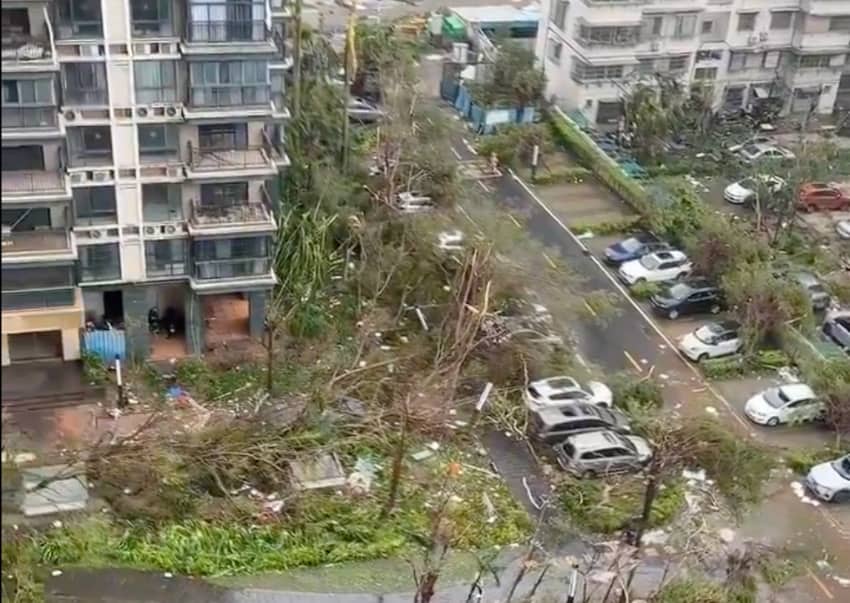Typhoon Yagi causes significant damage across Hainan, China and north Vietnam

Super Typhoon Yagi, the strongest tropical cyclone in Asia of 2024 so far, has caused significant damage across the island of Hainan in China and in northern Vietnam after making two landfalls yesterday.
Loss of life has been experienced in both countries and the footage on social media of property and infrastructure damage is stark, suggesting meaningful economic losses for the affected regions and high insurance market losses, relatively given the lower penetration.
As the 2024 Monte Carlo Rendez-Vous kicks off today, it is worth asking why typhoon Yagi isn’t in focus for more of the industry, but with still low insurance penetration rates, as well as more risk retained locally than transferred to reinsurance markets, many countries in Asia do not create the kind of headline-grabbing industry loss events that drive discussions among global market players.
But super typhoon Yagi has caused significant human and economic impacts, one only has to look at the footage to see that.
Typhoon Yagi first affected the northern Philippines as it doubled in strength offshore and drove swathes of rain, high seas and strong winds to the area.
Next, typhoon Yagi headed for the popular tourist island of Hainan, which lies to the south of mainland China, becoming the most powerful typhoon to strike this part of Japan since 2014’s typhoon Rammassun.
Intensification took Yagi’s winds to above 152 mph, enabling it to be classified as a super typhoon. Sustained winds when typhoon Yagi made landfall in Hainan were close to 140 mph, reports stated.
Local reports are calling damage catastrophic and the footage online of apartment blocks missing their cladding, windows ripped out and roofs gaping, suggest a meaningful toll for the regions economic resources to deal with. Damage to industrial facilities has also been reported, while Hong Kong also experienced some impacts from bad weather related to the typhoon’s near passage.
With insurance penetration rising in China, it is also anticipated that the insurance market loss for the affected region will be significant relative to past events as well. But as stated, the international insurance market loss likely won’t be significant and relatively little of the costs might find their way to any reinsurance capital as well.
After Hainan, typhoon Yagi headed for northern Vietnam, strengthening again as it crossed the Gulf of Tonkin.
Vietnam, especially the region close to the city of Hanoi, was badly impacted as well, with sustained winds still well into Catgroy 3 storm strength when typhoon Yagi made landfall.
Again, the video footage circulating on social media is stark and suggests significant impacts, widespread property damage and again a meaningful economic hit to the country and to the people affected.
Loss of life has again been reported, both on land after landfall as well as offshore as a number of ships were also sunk.
Property damage has again been widespread and social media footage shows roofs being torn off large industrial units, trees downed widely, properties damaged and people struggling to remain safe as typhoon Yagi tore ashore.
The coastal provinces of Haiphong and Quang Ninh were particularly badly impacted, while Hanoi itself also saw damage to buildings and businesses.
For Vietnam as well, typhoon Yagi is one of the strongest storms in recent history and after landfall typhoon Yagi has been relatively slow to degrade, while rainfall impacts are expected far inland and even into the country of Laos.
We are told there are elements of parametric insurance limit deployed in both Hainan and Vietnam. At this stage it is uncertain whether any will payout. But, if that parametric insurance is focused on the regions that received the strongest landfall winds, or nearby, there would be a good chance of it being triggered, we’d imagine.
Had a storm of the intensity of typhoon Yagi barrelled into the United States, or if social media footage was emerging showing similar damage levels in a city such as Miami, then this storm would immediately become part of the discussions in Monte Carlo today.
Event such as Yagi are a stark reminder of the power of mother nature and the damage it can cause, but also of the industry’s failure to penetrate some regions of the world as meaningfully as is clearly required, so far.
The insurance and reinsurance industry still has a job to do then, as the towns and cities directly affected by Yagi will take some rebuilding, while insurance protection would have been a significant help in that recovery and reconstruction, helping the population impacted bounce back from this clearly catastrophic event.
Yagi won’t change the reinsurance pricing conversation in Monte Carlo, but it might remind some of the executives attending about the clear opportunity to do more.
Could it raise discussion about why insurance fails to penetrate some regions, or is too costly for many people to afford, as well as the need for more efficient deployment of risk capital to help in maximising the beneficial reach of insurance protection? Perhaps.






